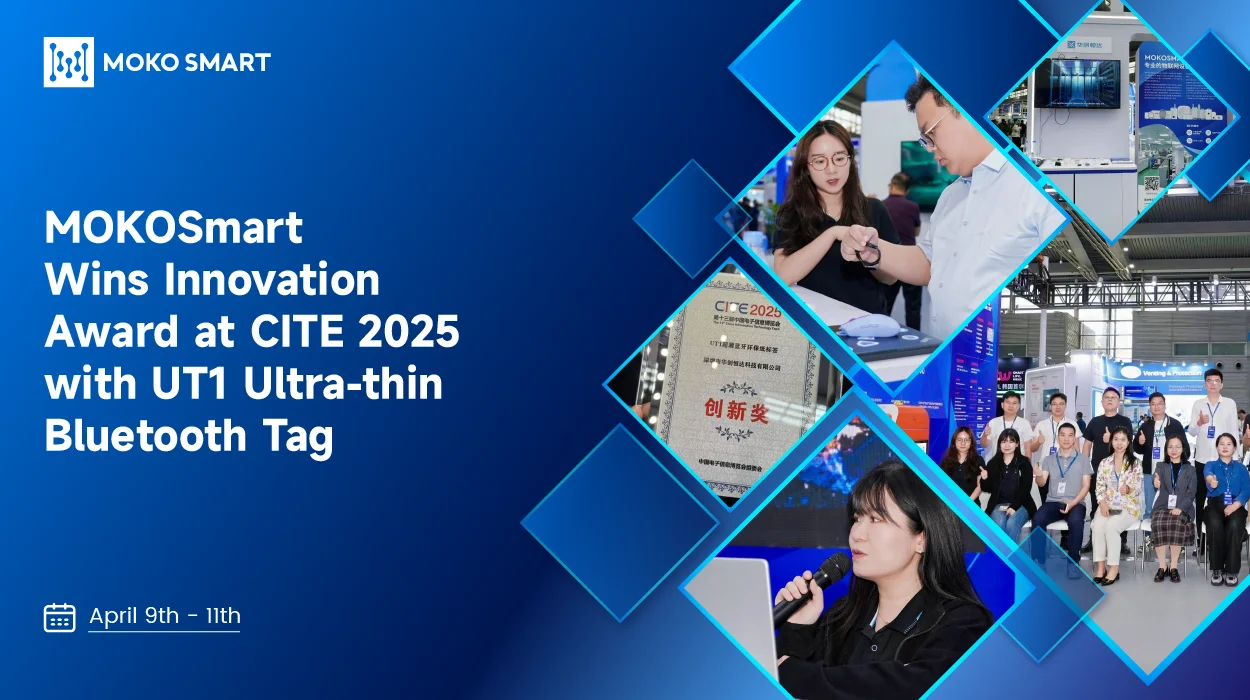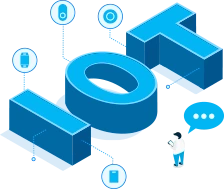Businesses today are getting into asset tracking technologies to make their operations better, especially those that rely on physical assets for day-to-day activities. According to Research and Markets, the global asset tracking market is projected to reach $41.77 十亿 2029 with a robust CAGR of 13.61%. 然而, little is known regarding the range, 精确, 可靠性, and benefits of the multiple asset tracking technologies. 所以, if you’re considering adopting an asset tracking solution for your business and need help picking one, this blog post has your back. I’ll break down 10 different indoor and outdoor asset tracking technologies and discuss their pros and cons to help you figure out which one works best for your business.
What is asset tracking technology
Asset tracking technology refers to the method used to monitor and track the location, movement, and status of physical assets(例如. 货物, 车辆, 设备), indoors and outdoors. It uses GPS, 蓝牙, LPWAN and other wireless tech to collect and provide accurate asset location data over a network.
Leaving aside technical details, a simple way to understand the tracking technology evolution is by looking at how it has been getting smarter over the past years. Asset tags used to be passive, simple identifiers now become smart devices that can transmit more data than just location. This represents a process of increasing technological efficiency. Modern asset tracking solution is basically the journey towards more comprehensive visibility with less human intervention.
5 leading indoor asset tracking technologies compared
You are now ready to explore the major types of asset tracking technologies. Let’s start with 5 common indoor location tracking technologies. From BLE to high-accuracy UWB, I’ll explain the details so you can get a better idea of them.
Bluetooth/BLE (低功耗蓝牙)
Bluetooth didn’t originally set out to be used for asset tracking solutions. It was not until the arrival of Bluetooth Low Energy beacons that Bluetooth made its way into the indoor positioning field. Most BLE positioning systems currently rely on RSSI (接收信号强度指示器) to estimate the proximity distance of objects. 蓝牙 5.1 took this a step further with its direction-finding capabilities, enabling more accurate asset tracking through Bluetooth AoA and AoD calculations. MOKOSmart offers various 蓝牙信标 和网关, as well as Bluetooth AoA tags and gateways that can achieve positioning accuracy within 1 仪表.
的 蓝牙 6.0 update introduces Channel Sounding for even more accurate positioning. Unlike the previous methods, Channel Sounding utilizes Phase-Based Ranging (策略性BR) and Round Trip Time (实时传输时间) 用于设备之间的安全和精细测距. 目前, we’re still in the early stages of Bluetooth 6.0, and the future of Bluetooth positioning holds great potential for further advancements in asset tracking and monitoring.
![]()
WiFi asset tracking
WiFi is everywhere, and most of us know it as the go-to for connecting devices to the internet or setting up local networks. Its widespread availability makes WiFi an effective option for indoor positioning. Thanks to the existing infrastructure, WiFi-based asset tracking system is relatively simple and cost-effective to roll out. Most WiFi solutions today use RSSI to locate and track assets, though not as accurate as BLE and UWB. 当然, more advanced tracking techniques like AoA, ToF and WiFi RTT can achieve higher precise positioning results. For now, 然而, these techniques typically require more complex setup and calibration.
WiFi is still evolving. It is expected that in the near future, 无线上网 6 and future versions will embrace significant improvements such as accuracy within meters.
The bottomline is that devices like MOKOSmart’s LW001-BG Pro GPS定位器 integrate WiFi, Bluetooth and GPS sniffing modules for seamless indoor and outdoor tracking.
超宽带 (超宽带)
Just like Bluetooth and WiFi, UWB is a short-range wireless communication protocol, but it stands out when it comes to accuracy and security. UWB is quickly emerging as a preferred option in asset tracking and Real-time location system (实时TLS), especially when precise positioning is required. That said, UWB solutions tend to be more expensive compared to other technologies.
What sets UWB apart is its ability to transmit signals over an extremely wide bandwidth, which allows it to transfer large amounts of data over short distances with high accuracy. Most UWB tracking solutions rely on Time Difference of Arrival (时差) to determine an asset’s location in real time. This enables sub-meter accuracy, often as precise as within 30 厘米.
在 MOKOSmart, we offer a series of UWB positioning hardware, including UWB tags and gateways. If you want to explore UWB solutions in action, try out our UWB asset tracking tags.
![]()
射频识别 (射频识别)
RFID has been around for decades, yet it remains widely used today, especially in warehousing and retail inventory tracking systems. It uses radio waves to identify and track assets equipped with RFID tags. These tags can be attached to tools, 设备, 库存, and packaging, and we can scan, monitor their location and movement.
There are two main types of RFID tags: 被动和主动.
Passive RFID tags don’t have their own power source. 代替, they rely on the signal from an RFID reader to power them. They’re mainly used to detect whether an asset is present in a certain area. They are low-cost, typically priced between $0.10 和 $0.60 每天. RFID readers, 然而, are more expensive and usually cost between $500 和 $2,000.
Active RFID tags are battery-powered and continuously broadcast their own signal, similar to Bluetooth beacons. These are used for real-time location tracking. Each tag generally costs between $5 和 $20 and has a battery life of about 3 至 5 年份.
![]()
QR Codes and Barcodes
QR codes are often seen as the modern evolution of barcodes. Both work on the same basic principle where you scan to access information, but neither supports real-time location tracking. Barcodes first found commercial success in asset tracking back in the 1970s. QR codes built on this concept and took things a step further by making scanning faster and more data-rich.
When it comes to managing large volumes of low-value assets, QR codes and barcodes still stand out as some of the most practical and cost-effective options available.
It is worth noting that neither barcodes nor QR codes show location on their own. Just like passive RFID, they rely on someone scanning them at a specific place and time so that location data can be recorded.
Barcodes usually require a dedicated scanner, while QR codes are more flexible since they can be scanned with everyday mobile devices like smartphones. Because QR codes are two-dimensional, they can store more information and can be scanned from any angle, something traditional barcodes cannot do.
Complete comparison of indoor asset tracking technologies at a glance
| 博美 | 无线上网 | 超宽带 | 射频识别 | QR Codes and Barcodes | |
| 范围 | Up to 240m | 高达 150m | Up to 200m | 1-100米 | Direct scan |
| 准确性 | 小麦首席信息安全官: 2-5米
成为迎角: 0.5-1米 |
< 10 米 | 0.1-0.3米 | Presence-based for passive, 1-3 meters for active | Precise ID |
| 成本 | $$ | $$$ (低 $ if infra exists) | $$$ | $–$$$ (passive vs. 积极的) | $ |
| Real-time Tracking | 是 | 是 | 是 | Partial | 没有 |
| 优点 |
|
|
|
|
|
| 缺点 |
|
|
|
|
|
| 最好的 | 室内导航, 零售, 后勤, 智能建筑 | Large facilities with existing WiFi, 医院, corporate campuses | High-value asset tracking, industrial sites, 卫生保健 | 库存管理, 零售, 后勤, 访问控制 | Low-value asset tracking, small inventory management, simple asset identification |
5 powerful outdoor asset tracking technologies for 2025
With the above information in hand, you should now have a general understanding of the common indoor asset tracking technologies. 下一个, I’ll take you into the leading outdoor tracking technologies.
GPS/GNSS
Satellite-based GPS and GNSS are some of the most widely used technologies for tracking outdoor assets. These systems rely on a network of satellites orbiting the Earth to determine the precise location of an asset. GPS receivers on the ground pick up radio signals from at least four satellites. With those signals, the receiver uses trilateration to calculate the exact location, usually expressed in latitude and longitude.
The accuracy of GPS tracking depends heavily on a clear line of sight to the sky. As long as the tracking device is in an open area with unobstructed visibility, GPS can deliver highly accurate positioning. But when you move into dense urban areas or go indoors, the signal quality drops and the positioning can become unreliable.
GPS asset trackers use satellites to locate and track assets, and they often integrate additional connectivity options such as cellular and LoRa.
![]()
蜂窝网络 (2G, 3G, 4G, 5G)
Cellular asset tracking uses existing cellular infrastructure, IE。, cell towers, to track asset locations. It typically relies on triangulating signals from nearby towers, which means its accuracy depends heavily on the strength and availability of cellular coverage. In areas with strong signal, location accuracy can reach around 30 米. But if the asset moves into zones with weak or no signal, tracking performance can drop off sharply.
It can be said that Cellular tracking is one of the least flexible but most powerful methods available. It uses 2G, 3G, and 4G networks to transmit data, often at higher rates than satellite-based systems. 在大多数情况下, cellular tracking complements GPS by stepping in when satellite signals are unavailable.
![]()
NB-IoT 和 LTE-M
NB-IoT and LTE-M are subsets of Cellular connectivity developed specifically for IoT fields. They are designed to provide low power consumption and extended coverage for applications with lower data transmission needs. The tracking scheme used for NB-IoT and LTE-M is the same as that for traditional cellular networks. 在大多数情况下, trackers combine NB-IoT or LTE-M with GPS. GPS provides the location, while NB-IoT and LTE-M are used to transmit the tracking data.
原来, NB-IoT was mainly used in static tracking scenarios. 相反, LTE-M is considered more suitable for mobile asset tracking such as vehicles, due to its higher bandwidth and shorter transmission delay. NB-IoT has gained further enhancements with 3GPP Release 14, and gets better in real-time, mobile asset tracking.
The hardware price of NB-IoT and LTE-M is similar to that of cellular networks, although the cost of networking is considerably lower. MOKOSmart offers a range of 蜂窝追踪器, including both wired and wireless options, as well as rechargeable badge trackers, adapting to different tracking needs.
广域网 (远程广域网)
The first version of the LoRaWAN specification was released in 2015 by the LoRa Alliance. LoRaWAN operates in unlicensed ISM bands, primarily 868 MHz in Europe and 915 北美 MHz. Since then it has emerged as one of the go-to technologies for wide-area asset tracking. As LoRaWAN’s popularity as a positioning technology grew, companies began to combine LoRaWAN with GPS to provide location services for indoor coverage or in areas with limited satellite visibility.
LoRaWAN network typically uses a star-of-stars topology. In this architecture, end devices communicate with multiple gateways, which in turn connect to a central network server.
Semtech’s LoRa Cloud™ geolocation integrates GNSS and WiFi positioning with the LoRa Edge platform. It is a cloud-based geolocation solution for indoor and outdoor asset management. 我们的 LW008-MT LoRaWAN Tracker utilizes the LR1110 chip to achieve GPS positioning with LoRa Cloud.
LoRaWAN’s impressive range and power efficiency make it a very important standard for outdoor and large-scale indoor positioning applications. It can be used in many location-based use cases and makes it easy to get started with asset tracking through existing or rapidly deployable LoRaWAN infrastructures.
![]()
西格福克斯
Compared with NB-IoT and LoRaWAN, Sigfox holds a relatively small market share among LPWAN technologies. Sigfox is mainly used for IoT devices that require extremely low data transmission. Its transmission speed is extremely slow, only 100bps, which also limits its application scope.
Sigfox has a wider transmission distance than LoRaWAN, 取决于 10 km in urban environments and 40 km in rural environments. 因此, wide-area tracking is possible with minimal infrastructure. The global Sigfox network is managed by local Sigfox operators (SOs) in different regions. Users cannot deploy private base stations and need to rely on existing Sigfox base stations. 此外, Sigfox devices pay for connectivity, and the subscription fee depends on the number of connections to the network, 范围从 $1 至 $14 per device per year.
![]()
Side-by-side comparison of outdoor asset tracking technologies
| 全球定位系统 | 蜂窝电话 | NB-IoT | 广域网 | 西格福克斯 | |
| 范围 | 全球的 (with satellite visibility) | Based on cell tower coverage | Based on cell tower coverage | 长达 15 公里 | 长达 40 公里 |
| 数据速率 | 50-100 bps | 取决于 100 兆比特 (4G)
取决于 10 Gbps (5G) |
取决于 250 千比特每秒 | 0.3–50 kbps | ~100 bps |
| 成本 | $$$ | $$$ (硬件 + subscription) | $$ (硬件 + lower subscription) | $–$$ | $ (硬件)
$ (subscription) |
| 优点 |
|
|
|
|
|
| 缺点 |
|
|
|
|
|
| 最好的 | Global tracking, 车辆, high-value outdoor assets | Real-time tracking with high data requirements, 车辆, field workers | Static or slow-moving assets, 米, sensors with low data needs | 远程监控, 农业, 智慧城市, wide-area asset tracking | Ultra low-power applications, simple status updates, basic tracking |
How to select the right asset tracking technology for your business
Choosing the right asset tracking technology comes down to matching the solution to your specific needs. 覆盖范围, location accuracy, data requirements, and cost all play a role. Here is a breakdown of which technologies fit different tracking scenarios.
If you need room-level accuracy and low-cost tags, Bluetooth is a reliable choice. If you want to make use of existing network infrastructure and need to cover an entire building, WiFi tracking is a better fit.
For applications that demand centimeter-level precision and can support higher hardware costs, UWB is the ideal option. Bluetooth AoA is also worth considering if you want high accuracy with more flexibility on cost.
When tracking every item in your inventory is the priority, RFID and barcode-based ID systems offer the most cost-effective approach.
If you prefer connectivity managed by a mobile carrier and are comfortable with subscription fees, NB-IoT is a strong candidate. For high-speed data needs such as real-time video or voice communication, LTE is the right choice.
LoRaWAN is suitable when long range, 电池寿命长, 低成本, and full control over your network are important. If you need a simple and ultra-low-cost solution for sending small data packets, Sigfox provides a straightforward answer.
Hybrid technologies for smarter, scalable asset tracking
In many situations, combining different tracking technologies leads to the most effective results. 例如, Bluetooth can handle precise indoor localization, while a Bluetooth-to-LoRaWAN or Bluetooth-to-cellular gateway extends the communication range for broader coverage.
This kind of hybrid setup is already making an impact. In San Sebastián, in the Basque region of northern Spain, MOKOSmart的 M2 Bluetooth Asset Beacon 和 LW003 Bluetooth to LoRaWAN Bridge are being used to improve public transport management.
![]()
For mobile applications like fleet tracking, MOKOSmart的 MKGW4 Outdoor Bluetooth to Cellular Gateway pairs perfectly with various Bluetooth beacons and sensors. It’s a versatile solution that fits a wide range of use cases, including cold chain monitoring, 车辆追踪, and door status detection.
Track your assets with MOKOSmart IoT devices
事实上, when it comes to asset tracking technologies, we’re only seeing the very tip of the iceberg. Asset tracking is already making waves in key sectors such as healthcare, 仓库, 后勤, 和制造. No one knows what new possibilities these asset tracking types will reveal in the near future.
With MOKOSmart’s versatile types of tracking devices, you can start tracking more effectively today. Our range of Bluetooth, 广域网, and cellular devices help businesses keep tabs on assets in real-time, streamline their operations, and get more insight into their processes. No matter the industry, MOKOSmart gives you the tools to stay ahead in a fast-changing landscape.





























